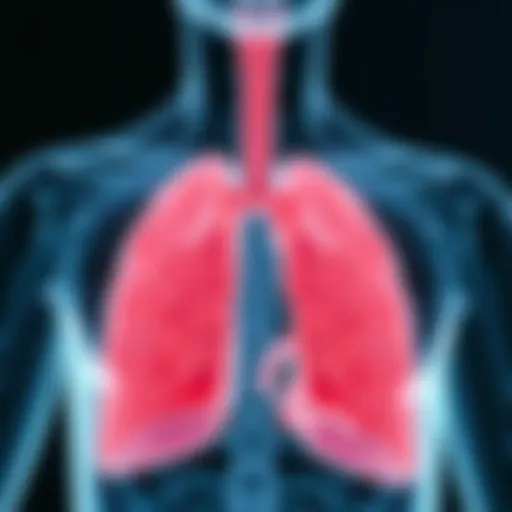Exploring the Advantages of Fresh Olive Leaf Benefits


Intro
Fresh olive leaves have become a topic of interest in both traditional and modern contexts. Their vivid green presence signifies not only aesthetic appeal but also potential health benefits. Understanding olive leaves is essential for researchers and practitioners focused on wellness and nutrition. This exploration aims to elucidate their various applications, both historical and contemporary.
Research Context
Background Information
Olive trees are ancient plants, native to the Mediterranean region. Historically, olive leaves have played significant roles in culture and medicine. Ancient Egyptians used olive extracts for their healing properties, while the Greeks recognized olive branches as symbols of peace and victory. The leaves themselves contain a plethora of compounds, making them rich in antioxidants, vitamins, and minerals.
Importance of the Study
The growing interest in alternative health solutions has led to renewed focus on olive leaves. Their potential therapeutic effects and nutritional richness warrant deeper investigation. The study of these leaves can bridge the gap between traditional herbal practices and modern scientific inquiry. As people increasingly seek natural remedies, understanding the biochemical properties of fresh olive leaves becomes crucial. This topic holds significance for both academic research and practical applications in health and well-being.
Nutritional Components
Fresh olive leaves are not merely waste but are instead repositories of beneficial compounds. They contain:
- Oleuropein: A bitter compound known for its antioxidant properties.
- Hydroxytyrosol: Recognized for its potential cardiovascular benefits.
- Vitamins: Such as A, C, and several B vitamins.
- Minerals: Including calcium, magnesium, and iron.
The presence of these compounds has led to an increased fascination with the ways in which olive leaves might impact health.
Traditional Uses
Historically, the infusion of olive leaves was a common practice in the Mediterranean. Various cultures utilized them for their supposed health benefits. Common traditional uses include:
- Cough Relief: Olive leaf tea is often used for easing respiratory issues.
- Anti-inflammatory Effects: Many cultures employ olive leaves for their purported ability to reduce inflammation.
- Blood Sugar Regulation: Some traditions claim benefits for maintaining healthy blood sugar levels through olive leaf extracts.
Modern Applications
In contemporary settings, research has expanded to understand how fresh olive leaves can contribute to overall wellness. Modern applications focus on:
- Nutritional Supplements: Fresh olive leaf extracts are available in capsules and tinctures.
- Culinary Uses: Chefs use olive leaves in marinades and cooking for their distinct flavor profile.
- Cosmetic Products: Due to their antioxidant properties, olive leaf extracts are increasingly added to skincare formulations, promoting skin health.
"Olive leaves have emerged as a powerful ingredient across various domains, reinforcing the harmony between tradition and innovation."
Ongoing Research
Several studies are exploring the comprehensive effects of olive leaf extracts on health. Research examining:
- Antimicrobial Properties: The ability of compounds in olive leaves to combat bacteria and viruses.
- Anti-aging Effects: Investigating how antioxidants in olive leaves may contribute to skin health and longevity.
- Heart Health: Understanding their influence on cholesterol levels and overall cardiovascular health.
End
The exploration of fresh olive leaves is a multi-faceted endeavor, bridging ancient wisdom and modern science. The health benefits, nutritional components, and diverse applications make them a significant subject for further study. It is essential to synthesize the growing body of research to fully unlock the potential of this often-overlooked part of the olive tree.
Foreword to Fresh Olive Leaf
Fresh olive leaves are gaining recognition in various fields for their potential health benefits and versatile applications. Their importance stems from a blend of rich history, traditional medicinal practices, and modern scientific research that reveals their biochemical properties. This section sets the stage for understanding why fresh olive leaves deserve attention from researchers, health practitioners, and those interested in natural remedies.
The exploration of fresh olive leaves unveils several key elements. First, the historical context provides insight into how these leaves were used by ancient civilizations. They have been part of cultural traditions for thousands of years, playing significant roles in health and wellness practices.
Second, the cultural significance of olive leaves reflects their symbolic meanings, particularly in Mediterranean cultures. They embody peace and victory, making them an integral part of various societal rituals.
As we discuss the intersection of history and culture, it becomes evident that the use of fresh olive leaves is not a mere trend. Their functional benefits cover a wide range of areas, such as nutrition, herbal medicine, and even cosmetics. With growing interest in natural health products, recent studies continue to explore their therapeutic properties, emphasizing their relevance today as much as in the past.
Overall, this article will present a thorough examination of fresh olive leaves, their historical roots, and their role in contemporary health practices.
Historical Context
The history of olive leaves stretches back to ancient civilizations. Evidence shows that the olive tree originated in the Mediterranean region, where its leaves have been recognized for various purposes. Ancient Egyptians valued olive leaves for their medicinal properties and used them in traditional remedies.
Furthermore, Greek history cites the olive tree as sacred. They believed the olive branch represented peace and victory. Historically, these leaves were not just symbolic; they were used to help treat ailments and maintain health in communities.
Cultural Significance
In various cultures, especially in the Mediterranean, olive leaves carry deep cultural meanings. They are often associated with rituals and folklore. For instance, in ancient Greece, victorious athletes were crowned with olive wreaths, symbolizing achievement and honor.
In addition, many cultures utilize olive leaves in traditional celebrations, emphasizing their link to well-being and prosperity. Today, they continue to be a part of modern cultural practices, emphasizing their enduring legacy.
"The olive leaf is not merely a remnant of the past, but a living symbol of health, victory, and resilience across generations."


Recognizing their significance enriches the understanding of fresh olive leaves and provides a foundation for exploring their modern applications and health benefits.
Biochemical Composition of Fresh Olive Leaves
The biochemical composition of fresh olive leaves plays a crucial role in understanding their potential health benefits and uses. The unique combination of compounds found in these leaves contributes to their therapeutic properties, making them a subject of interest for both researchers and health enthusiasts. These compounds are primarily phytochemicals and nutrients, which can enhance well-being in various ways.
Phytochemicals
Phytochemicals refer to bioactive compounds produced by plants. In the context of olive leaves, these compounds are primarily categorized into polyphenols, flavonoids, and triterpenes. The significance of phytochemicals lies in their ability to provide various health benefits, such as antioxidant, anti-inflammatory, and antimicrobial properties.
Polyphenols
Polyphenols are a group of chemical compounds found in plants. In olive leaves, they contribute to the overall antioxidant activity. The key characteristic of polyphenols is their ability to neutralize free radicals, which can lead to cellular damage. This makes them a popular choice in health-related applications. Moreover, olive leaf polyphenols are associated with promoting metabolic health and reducing the risk of chronic diseases.
A unique feature of polyphenols is that they can enhance the absorption of other nutrients in the body, which can be advantageous. However, it is important to consider that excessive consumption of polyphenols may lead to certain gastrointestinal discomforts.
Flavonoids
Flavonoids are another vital group of compounds present in olive leaves. These compounds are known for their anti-inflammatory and antiviral properties. Flavonoids can boost the immune system and offer cardiovascular protection. Their key characteristic is their capacity to improve blood circulation and lower blood pressure.
Flavonoids also have a unique feature: they can support the body's response to oxidative stress, making them advantageous for overall health. Yet, some may experience allergic reactions to certain types of flavonoids, which should not be overlooked.
Triterpenes
Triterpenes are less commonly discussed but are significant in the composition of fresh olive leaves. These compounds have been shown to exhibit anti-inflammatory and anti-cancer properties. The key characteristic of triterpenes is their potential to inhibit tumor growth.
A unique aspect of triterpenes is their ability to interact with various biological pathways, thus influencing overall health positively. Despite their benefits, the concentration of triterpenes in olive leaves may vary based on several factors, including the plant's growing conditions.
Nutritional Value
The nutritional value of fresh olive leaves is another important aspect. Vitamins, minerals, and antioxidants form the backbone of their nutritional profile, contributing significantly to their health benefits.
Vitamins
Vitamins found in fresh olive leaves include A, C, E, and several B vitamins. These vitamins are vital for maintaining various bodily functions, including immune support and skin health. The key characteristic of these vitamins is their role in nourishing the body and preventing deficiencies.
Furthermore, the unique feature of these vitamins in olive leaves is that they are preserved effectively when prepared properly. This can make olive leaves a beneficial addition to a balanced diet. However, over-cooking or processing can diminish their nutrient value.
Minerals
Minerals such as calcium, magnesium, and potassium are also present in fresh olive leaves. These minerals are essential for bone health, muscle function, and maintaining fluid balance. The key characteristic of these minerals is their role in supporting cellular functions and promoting overall health.
Notably, the unique feature of minerals in olive leaves is their bioavailability, meaning the body can absorb and use them efficiently. However, excessive intake of certain minerals can lead to health issues, so moderation is key.
Antioxidants
Lastly, antioxidants in olive leaves help combat oxidative stress and inflammation. The key characteristic of antioxidants is their ability to protect cells from damage. This property makes them a beneficial component in the prevention of numerous diseases.
The unique feature of antioxidants in olive leaves is that they work synergistically with other compounds to enhance their overall effectiveness. However, a diet overly reliant on supplements rather than whole foods with antioxidants may not provide the same health benefits.
Traditional Uses of Olive Leaves
The traditional uses of olive leaves reflect a rich tapestry of cultural practices and medicinal beliefs that have persisted through the ages. Their significance goes beyond mere folklore; they have been integral to various healing systems. The insights from traditional applications provide a foundation for understanding their modern relevance.
Ancient Remedies
Olive leaves have been employed in ancient remedies across different cultures. Historically, they were utilized in traditional medicine for various ailments. The Egyptians are notably recognized for their use of olive leaves, including in their embalming processes. They valued the leaf for its preservative properties.
In the Mediterranean regions, herbalists used olive leaf extracts to treat conditions such as fevers, infections, and wounds. The bioactive compounds found in fresh olive leaves, such as oleuropein, contributed to the leaf's reputation as a healing agent. These compounds exhibit antimicrobial and anti-inflammatory properties, adding a layer of credibility to their medicinal use.
Modern studies have begun to substantiate these ancient claims. Research indicates that olive leaf extracts may help manage blood pressure and support immune health. These findings further elevate the relevance of traditional wisdom in contemporary healthcare contexts. As interest in herbal remedies grows, the historical foundations of olive leaf applications become increasingly relevant.
Culinary Applications
Beyond their medicinal uses, olive leaves have also found a place in culinary practices. Chefs and home cooks are rediscovering the unique flavor profile that the leaves provide. Fresh olive leaves can be used to infuse oils, season meats, or enhance flavor in soups and stews.
The leaves also impart a mild, earthy taste reminiscent of olives, making them an excellent addition for those looking to elevate their dishes. Some traditional Mediterranean recipes involve wrapping fish or meats in olive leaves before grilling, allowing for a subtle yet distinct flavor enhancement.
Using olive leaves in cooking also carries health benefits. Their nutritional components, including antioxidants and polyphenols, can contribute positively to a balanced diet. Incorporating fresh olive leaves into meals aligns well with trends towards using whole food ingredients that offer both taste and health benefits.
Explore more about the culinary applications of olive leaves on
"Olive leaves are not merely a byproduct of olive cultivation; they possess culinary potential that is being unlocked by chefs worldwide.”


Modern Applications of Fresh Olive Leaf
The modern applications of fresh olive leaf are gaining traction in various sectors due to their unique properties. This section aims to illuminate key aspects, benefits, and considerations related to these applications.
Nutraceuticals and Supplements
Fresh olive leaves have found a significant niche in the nutraceutical sector. They are often processed into supplements due to their rich content of phytochemicals, especially oleuropein, known for its potent antioxidant properties. These supplements are marketed to boost overall health, contributing to improved immune function and cardiovascular wellness.
Numerous studies corroborate the health benefits of olive leaf extraction. For instance, they may help regulate blood pressure and support metabolic function. Many people lean towards natural supplements for disease prevention instead of synthetic options.
- Key Benefits of Olive Leaf Supplements:
- Boosts immune system functionality
- May assist in regulating blood sugar levels
- Offers enhanced antioxidant defenses
- Potential to lower cholesterol levels
When considering olive leaf as a supplement, it is important to choose a reputable brand to ensure quality and efficacy. Research on dosing varies, and consulting with a healthcare professional before starting supplementation is wise.
Cosmetic Products
In addition to their health benefits, fresh olive leaves are increasingly utilized in the cosmetic industry. Their anti-inflammatory and antimicrobial properties make them highly sought after in skincare formulations. Products containing olive leaf extract are known to soothe skin conditions and provide hydration.
The extraction process retains many beneficial elements, allowing brands to incorporate them into various formulations such as creams, serums, and cleansers. The use of olive leaf extract helps to fight free radicals, which can lead to premature aging.
- Applications in Cosmetics:
- Moisturizers for dry skin
- Anti-aging products targeting wrinkles
- Acne treatment solutions
- Soothing agents for sensitive skin
As the cosmetic industry continues to lean towards natural ingredients, olive leaf extracts are likely to see increased demand. Understanding the sourcing and processing of these leaves is essential for consumers who want to prioritize sustainable and effective skincare products.
"The shift towards natural cosmetic ingredients illustrates a broader consumer trend towards wellness and sustainability."
Health Benefits of Fresh Olive Leaf
Fresh olive leaves are gaining recognition for their multiple health benefits. These leaves are rich in phytochemicals and bioactive compounds. As research progresses, their role in health and wellness becomes more significant. Understanding the health benefits can provide insights into why fresh olive leaf has been incorporated into various wellness routines.
Antimicrobial Properties
Fresh olive leaves have shown promise in combating various pathogens. The key compounds in the leaves, such as oleuropein, exhibit strong antimicrobial activity. This substance can potentially inhibit the growth of bacteria, fungi, and viruses. Studies indicate that extracts from olive leaves can affect strains of bacteria like Escherichia coli and Staphylococcus aureus. Such properties make fresh olive leaves a candidate for natural preservatives in food and may enhance overall health by reducing the risk of infections.
Anti-Inflammatory Effects
The anti-inflammatory properties of fresh olive leaf are noteworthy. Chronic inflammation is linked to many diseases, including heart disease and diabetes. Compounds found in olive leaves, particularly flavonoids, play a role in reducing inflammation. Some studies suggest that regular consumption can lower inflammation markers in the body. This may provide relief from conditions such as arthritis and other inflammatory diseases. The leaves could serve as a natural option for those seeking to manage inflammation without pharmaceuticals.
Cardiovascular Health
Cardiovascular health is increasingly important in today’s fast-paced world. Fresh olive leaves contain antioxidants that support heart health. These antioxidants combat oxidative stress, a major factor in heart disease. Additionally, they may help maintain healthy blood pressure levels. Some studies indicate that regular intake of olive leaf extracts can improve lipid profiles, thereby reducing bad cholesterol. The cumulative effects can contribute to better heart health over time. Incorporating fresh olive leaves into one’s diet could be a proactive measure in maintaining cardiovascular well-being.
"Fresh olive leaf offers a range of health benefits that make it a worthy addition to the diet."
In summary, the health benefits of fresh olive leaf are broad and significant. From antimicrobial properties to anti-inflammatory effects and support for cardiovascular health, the scientific exploration of these leaves continues to unfold. This makes fresh olive leaf an important subject for ongoing research and practical applications in health and wellness.
Research Developments
Research developments in the field of fresh olive leaf studies are crucial. As scientific inquiry into the health benefits and applications of olive leaves progresses, new insights continue to emerge. These developments not only enhance our understanding but also pave the way for innovative uses in various sectors.
Current Studies
Numerous studies are currently examining the various components and effects of fresh olive leaf. One significant area of investigation focuses on the biochemical properties of the leaf. Research shows that compounds such as oleuropein and other polyphenols play a critical role in health effects. A study published in the Journal of Medicinal Food suggests that oleuropein may exhibit antioxidant properties, which can combat oxidative stress.
Another active area of research investigates the antimicrobial properties of fresh olive leaf extracts. Research conducted at the University of California indicates that these extracts have the potential to inhibit a range of pathogens, a discovery that could lead to new natural remedies. These findings are fundamental for the development of nutraceuticals.
Future Directions
Future research directions for fresh olive leaf exploration appear promising. There is a growing need to investigate the efficacy and safety of olive leaf in various therapeutic areas. For example, clinical trials focusing on the impact of olive leaf extracts on chronic diseases, like diabetes and hypertension, would be beneficial.
Moreover, enhancing extraction methods and formulations is another critical area. Improved processing techniques can optimize the yield of beneficial compounds, making the extracts more effective.
Additionally, interdisciplinary research combining traditional knowledge with modern science can unlock new applications. Integrating ethnobotanical studies with pharmacological evaluations may lead to richer insights into the cultural significance of olive leaf, thereby enriching both academic knowledge and practical applications.
"Research is the foundation upon which we build our understanding of natural products like fresh olive leaves."
Safety and Side Effects
Understanding the safety and possible side effects of fresh olive leaf is crucial for anyone considering its use. As research continues to unveil the beneficial properties of this natural resource, it is equally important to acknowledge the potential risks it may pose when consumed or used improperly. Identifying these aspects will help individuals make informed decisions about incorporating fresh olive leaf into their health regimen.


Potential Risks
While many users report positive effects from using fresh olive leaf, there are notable risks that should not be ignored. Some individuals may experience allergic reactions, particularly if they are sensitive to the Oleaceae family, which includes olives. Symptoms can range from mild skin irritations to more severe respiratory issues in rare cases.
Additionally, because fresh olive leaf can affect blood pressure, people with hypotension or those on blood pressure medications need to be cautious. Combining the extract with such prescriptions could lead to unintended drops in blood pressure, resulting in dizziness or fainting. Furthermore, olive leaf has anticoagulant properties, increasing the risk of bleeding when taken with blood-thinning drugs like warfarin. Therefore, it is essential to consult a healthcare provider before starting any supplement regimen involving fresh olive leaves.
Dosage Considerations
Determining the right dosage of fresh olive leaf is vital for maximizing its benefits while minimizing risks. Currently, there is no standard dosage established, largely due to variations in individual health needs, forms of consumption, and the specific extract being used. For general consumption, it is suggested to start with small amounts, perhaps from 200 to 500 milligrams of an extract per day. Observing how the body reacts can provide insight into tolerance levels.
When consuming fresh olive leaves directly, one might brew them into a tea. A common recommendation is to use about 5 to 10 grams of leaves per cup of water, steeping for 10 to 15 minutes. But due to the lack of extensive clinical studies, anyone considering these methods should proceed with caution. Individuals are advised to gradually increase the quantity while closely monitoring for any adverse effects.
It’s critical to tailor your intake to your personal health circumstances and existing medications. Always engage with a healthcare professional to guide your decision.
In summary, while fresh olive leaves offer various health benefits, potential risks and proper dosage should be taken into account. Careful integration into daily routines will enhance the overall experience, allowing one to enjoy the benefits of olive leaf while minimizing adverse outcomes.
Sourcing and Processing Fresh Olive Leaf
The sourcing and processing of fresh olive leaves play a critical role in ensuring the quality, availability, and efficacy of the numerous benefits they provide. Understanding these areas is essential for researchers, industry practitioners, and consumers alike. The intricacies of these processes can define not only the characteristics of the olive leaves but also their impact on health and wellness. Poorly sourced or processed leaves may lose valuable phytonutrients, thus reducing their potential health benefits.
To obtain high-quality olive leaves, several factors must be considered, including cultivation methods, harvesting techniques, and processing strategies. A well-structured approach can lead to superior products that are effective and beneficial.
Harvesting Techniques
The harvesting of olive leaves requires specific techniques to ensure that the leaves maintain their natural attributes. Timing is pivotal; leaves are ideally harvested in spring when they are freshest and most nutrient-dense. At this stage, the concentrations of polyphenols and flavonoids are at their peak, making them the most useful for therapeutic applications.
- Hand Picking: This method is labor-intensive but allows for careful selection of the leaves. Harvesters can choose only the finest leaves without damaging the plant.
- Mechanical Harvesting: This is more efficient for larger operations but may lead to some leaves being damaged. While it increases productivity, there is a trade-off in terms of quality.
In both methods, it is crucial to avoid leaves that are discolored or damaged. Proper care during harvesting protects the leaves from oxidation and degradation, preserving their bioactive components.
Processing Methods
Once harvested, fresh olive leaves need appropriate processing methods to maintain their health benefits. The objective is to minimize exposure to light, heat, and excessive moisture, which can erode specific nutrients.
- Washing: Leaves should first be gently washed to remove any soil, pests, or contaminants. This step is critical to ensure purity and safety.
- Drying: Leaves can be air-dried or dehydrated using controlled temperature settings. Air drying, though taking longer, typically retains more nutrients compared to heat-based methods.
- Grinding: For supplements and capsules, dried leaves are then ground into a fine powder. This step must be done carefully to preserve the delicate compounds present in the leaves.
- Storage: Proper storage in a cool, dark place is vital to maintain freshness. Ideally, they should be stored in airtight containers to limit exposure to air and moisture.
Overall, the sourcing and processing of fresh olive leaves are not just logistical steps but pivotal factors that determine the final product's quality and effectiveness. In this manner, one ensures that the numerous benefits attributed to olive leaves are not only a promise but a tangible reality.
Global Availability and Market Trends
The global availability and market trends surrounding fresh olive leaf are significant for understanding its economic impact and potential benefits. The rise in demand correlates with increased awareness of health consciousness among consumers and their quest for natural remedies. This segment will explore key aspects of availability and market trajectories that shape the consumption of fresh olive leaves.
Market Demand
The demand for fresh olive leaf is primarily driven by growing consumer interest in herbal supplements and natural health products. Increased media coverage highlighting the health benefits of olive leaves, particularly their antioxidant properties, has further propelled this interest.
- Health-conscious populations, particularly in regions like North America and Europe, are increasingly integrating olive leaves into their diets.
- The popularity is evident in sales trends across various platforms, including health food stores, online retailers, and specialty shops.
- Consumers are also turning to fresh olive leaves for use in herbal teas, essential oils, and skincare products, enhancing their daily wellness routines.
Potential benefits for sellers in this growing market include:
- Diverse Application: Fresh olive leaves can be marketed in various forms, catering to different consumer needs.
- Niche Market: Effective targeting of health-conscious individuals allows for premium pricing and increased profitability.
- Educational Opportunities: Sellers can engage customers by sharing knowledge about the benefits, thus expanding their market reach.
Export and Import Dynamics
The dynamics of export and import of fresh olive leaves reflect broader agricultural trends and international demand. Countries like Greece and Italy are leading exporters, while nations with a growing interest in alternative health products are becoming significant importers.
- Supply Chain Factors: The availability of fresh olive leaves is often influenced by local agricultural practices, climate conditions, and seasonal production cycles. Exporters must navigate these dynamics effectively to maintain consistent supply.
- Regulatory Considerations: Import regulations can vary significantly. Understanding these is crucial for businesses seeking to export fresh olive leaves to new markets.
- Market Access: Trade agreements and partnerships can facilitate easier access to foreign markets, making it profitable for companies to engage in international trade.
"Market trends indicate that the future growth of the fresh olive leaf segment relies heavily on consumer education and awareness of its health properties."
In summary, the landscape of fresh olive leaf availability is changing, influenced by consumer demand and international trade dynamics. Focusing on these trends will be crucial for stakeholders looking to capitalize on the potential of this natural product.
Ending
The conclusion serves as an essential component of this article. It synthesizes the various aspects of fresh olive leaves and reinforces their multi-faceted benefits and applications. By reflecting on the preceding sections, it highlights the biochemical significance of olive leaves, their historical context, and both traditional and modern uses.
Moreover, this section emphasizes the need for continued research in this area. As seen in the analysis of current studies and future directions, fresh olive leaves can contribute considerably to health and nutraceutical industries. The medicinal properties along with the nutritional value offer profound avenues for innovative applications.
Summary of Key Points
- Fresh olive leaves are rich in phytochemicals, including polyphenols and flavonoids, which have antioxidant properties.
- They have been used traditionally for various purposes, from ancient remedies to culinary applications.
- There is a growing interest in their health benefits, especially in terms of antimicrobial effects and cardiovascular health.
- Modern applications include their incorporation into nutraceuticals, dietary supplements, and cosmetics.
- Ongoing research indicates potential for further understanding and utilization of these leaves in health and wellness industries.
Implications for Future Research
Future studies can explore a wide range of aspects related to the health benefits of fresh olive leaves. There is a necessity to conduct more clinical trials to validate the claimed therapeutic effects. Additionally, examining the impact of different processing methods on the retention of beneficial compounds would be valuable.
Furthermore, the role of fresh olive leaves in combating specific health issues could be scrutinized. Developing new products that harness these benefits may enhance market opportunities.
Consolidating knowledge in this area could ultimately lead to new innovations that enhance wellness, solidifying the role of fresh olive leaves in modern diets and health practices.















